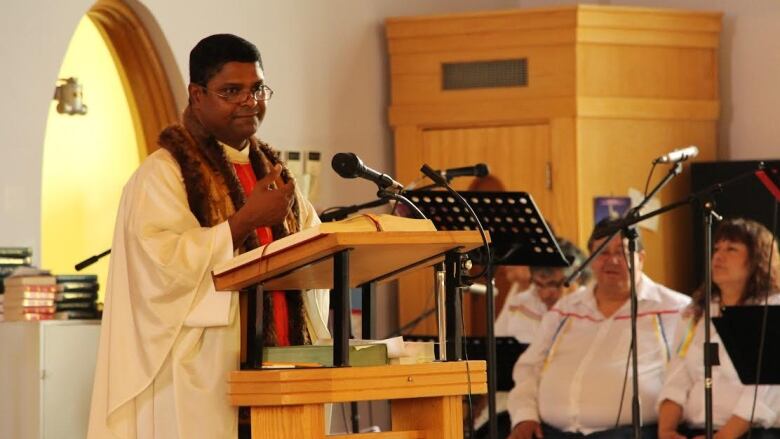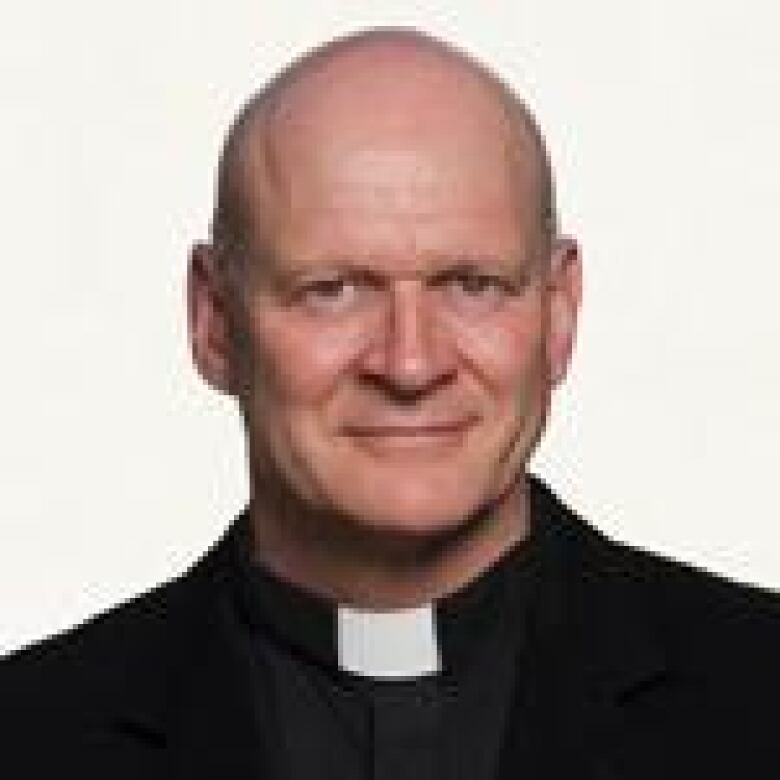N.W.T. parish divided over incorporating aboriginal practices
New bishop says adding aboriginal culture into Catholic liturgy 'should and must happen'

The recent departure of a priest from an N.W.T. parish revealed underlying tensions between aboriginal and some non-aboriginal people over the incorporation of aboriginal traditions in Northernchurches.
St. Joseph's Cathedral in Fort Smith is the central parish of the Roman Catholic diocese of Mackenzie-Fort Smith, which comprises the N.W.T., western Nunavut and parts of northern Saskatchewan.
Father Paul Payyapilly, a priest from India, spent nearly five years in Fort Smith and while there he began incorporating aboriginal spiritual traditions into masses.
Father James Holland, the pastor at Sacred Heart Catholic church in Edmonton, remembers how the parish in Fort Smith was before Father Paul arrived in 2007.
"The First Nations people always sat in the very back, as if they were second class citizens and the non-aboriginal people sat up front and participated and did all the directions," he said.
"Under Father Paul, they became, or were becoming, [part of the] church," says Holland.
Payyapilly began holding a monthly mass where there wassmudging with sweetgrass, and he invited elders and others in the community to lead prayers, sing and drum in the choir. He used an offering blanket for the collection of donations to the church.
"He's outgoing;he loves the native people," says parishioner Mary Bourque of Payyapilly. "He mixes with everyone. He loves everybody."
Opposition from the 'old stock'
And while most people in the parish appreciated Father Paul, there was a small handful of people in town who opposed his changes, and in particular, the monthly aboriginal mass.

"You have to know the history of Fort Smith," says Francois Paulette, a Dene activist and former Chief of Smith Landing First Nation. He references the French missionaries who settled there and spread Catholicism back in the 1800's, and again in the 1950's.
"There are people that live in Fort Smith that come from the old stock," he says. "They don't really involve themselves with indigenous people, their ceremonies, their way of praying."
"It was very hard on him, I think," says Bourqueof the resistance. She says it was only a small group that criticized Father Paul's work, but they were powerful.
It's a divide that Bishop Mark Hagemoen now calls heartbreaking. He took over the Mackenzie- Fort Smith Diocese in December 2013.
"The community is experiencing division along the lines of a few areas, which include the place of aboriginal spirituality in the liturgical life of the cathedral," says Hagemoen. "And that has become, in my very short time here, a very heated experience."
Priest's departure ignites debate
This summer Payyapilly's term of service in Canada was up and his bishop in India said he needed him back.
News of Payyapilly's departure hit Fort Smith hard, and as emotions ran high, some blamed the handful of people who opposed the place of aboriginal spirituality in the church for forcing him out.
"Father Paul left Fort Smith because his bishop in India called himback, full stop," saysHagemoen.

The bishop says that in his diocese, which is close to 75 per cent aboriginal, it is essential to include aboriginal culture in Catholic liturgy in order to best connect with the people."Father Paul left Fort Smith because his bishop in India called himback, full stop," says Hagemoen.
"In Behchoko, for example, anytime you do mass it's an aboriginal mass because the aboriginal culture of those communities has infused the celebration of the Eucharist a long time ago," he said.
"They had pastors that actually translated the scriptures and the mass in the particular Dene language. It would be interesting for people from people in Fort Smith or other places to experience the liturgy at Behchoko,"
Payyapilly's final mass at St. Joseph Cathedral included an opening prayer by an elder, smudging, drumming, talk of the four directions and a blanket collection.
"It was a powerful day to explain the presence of aboriginal spirituality in our Catholic liturgy," says Payyapilly.
Father Bernie Black, formerly the priest in Hay River, is now serving as the new pastor in Fort Smith.
Hagemoen says he is getting acquainted with the community and the decision of whether the monthly aboriginal mass will continue is his to make, "but I would say as a bishop that the incorporation of aboriginal faith and culture into Catholic liturgy, mass and sacraments is a feature of this Catholic diocese, so that will happen, and it should and must happen."
He says it's also up to the town leaders and elders to ensure that it continues.












_(720p).jpg)


 OFFICIAL HD MUSIC VIDEO.jpg)
.jpg)



























































































